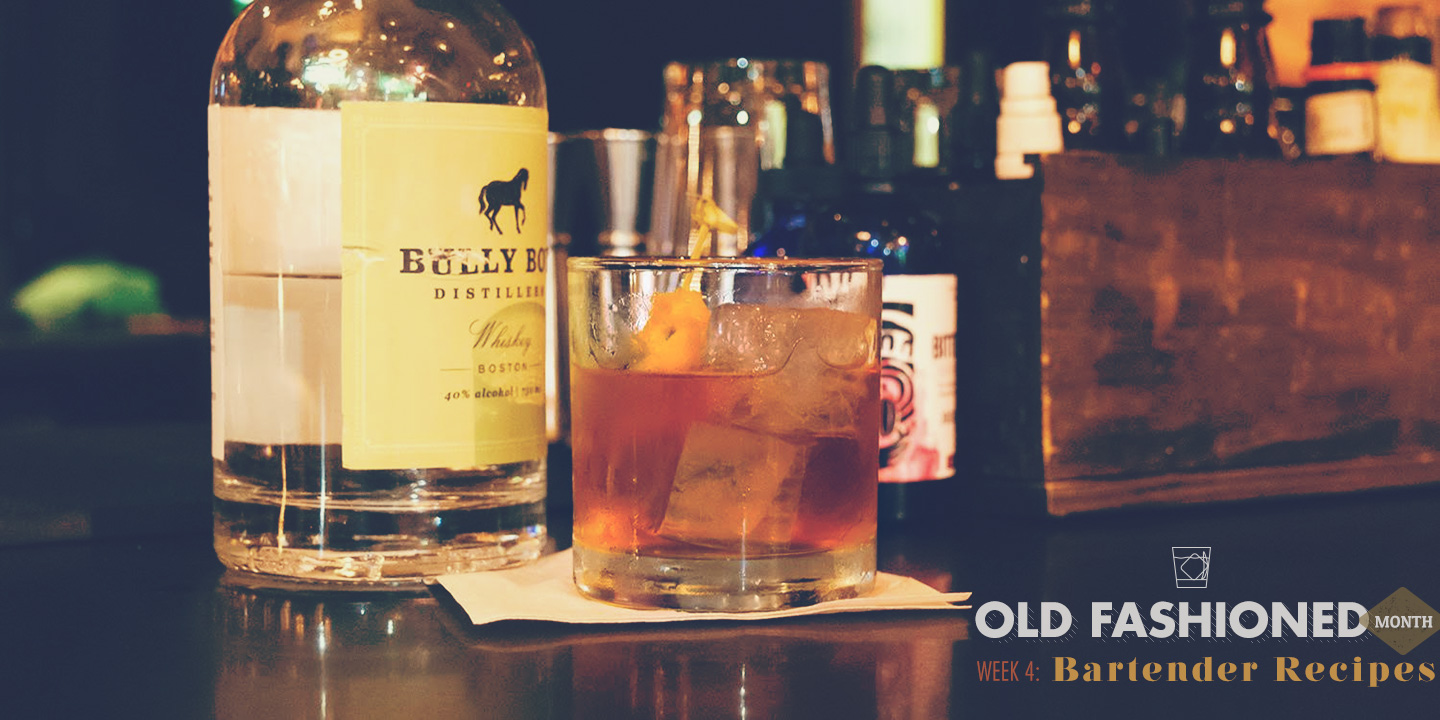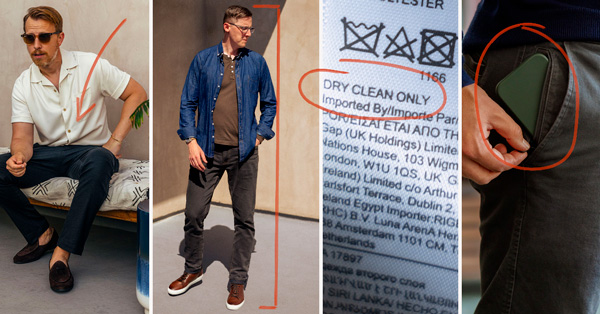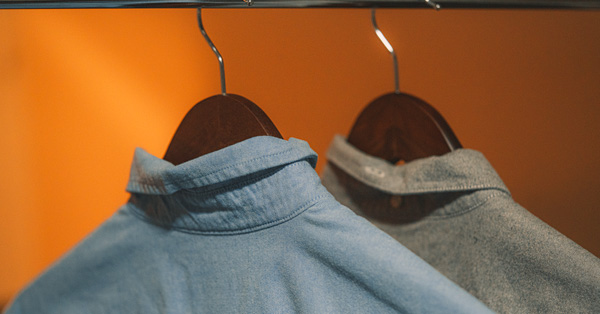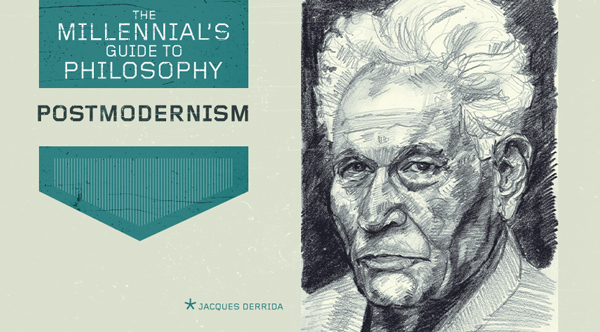I’m not a professional bartender. The closest I’ve come is spending a couple of hours furiously mixing drinks for a decent-sized cocktail party, and as any bartender will tell you, that isn’t even close to the same thing. So I’m closing out Old Fashioned Month with a group of recipes graciously delivered to me by bartenders at some of the US’s best cocktail bars. These are carefully-crafted drinks that have been put to the test: they’ve appeared on bar menus, and been served to countless customers. They range from straightforward to truly weird and decadent, and show to great effect just how malleable the Old Fashioned is, and how much it can be tweaked and customized while still retaining that same internal character that runs through all of the drinks we’ve featured this month.
The Old Fashioned is the original cocktail personified: liquor, sugar, bitters, water. But like the original cocktail, it’s since grown and expanded in scope. I hope our exploration this month of its variants has encouraged you to branch out, try new things, and maybe create something of your own. Thanks for reading! Now … on to the drinks.
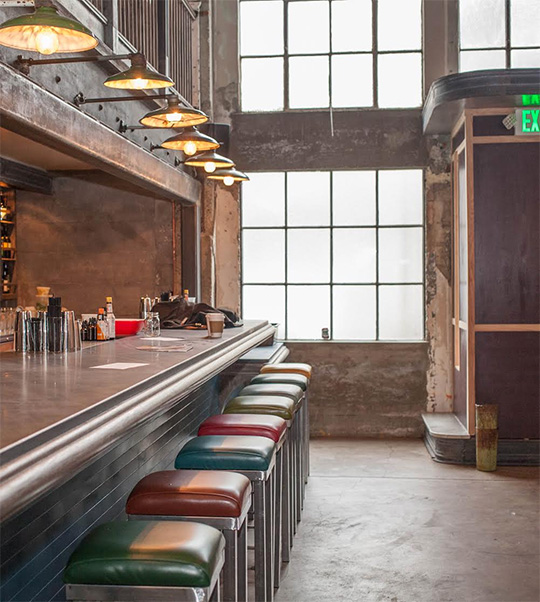
Photo By Allison Webber
December – Trick Dog (San Francisco, CA)
Nestled in San Francisco’s celebrated Mission District, Trick Dog is no darkened speakeasy: its front windows are large and uncovered, letting the sun in during the day, and allowing the glow of the bar out into the streets in the evening. They feature a frequently-rotating menu of spectacular cocktails (current theme: a “Dog of the Month” calendar), which means there’s always something new to try.
It’s been called the best bar in San Francisco by more than one publication, so when Trick Dog’s drink mavens offer up a recipe, well, reader take notice! I spoke with Bar Manager Caitlin Laman, and she provided me both the recipe for their drink, and for the delicious-sounding syrup it uses. Deceptively simple, this Old Fashioned Variant complements good old rye whiskey with flavors of coffee, toasted coconut, and sandalwood. This one shouldn’t be too hard to make at home—it’s a standard 2:1 syrup with some extra flavors—but you probably won’t need the 40 ounces their recipe makes. I suggest using about a quarter or even an eighth of the amounts listed.
You can’t find commercially packaged sandalwood bitters, unfortunately, but Dutch’s Colonial Bitters use sandalwood as a primary ingredient and would probably be an excellent choice. Alternately, you could make your own – sandalwood is not hard to find online, and the Trick Dog folks specified that their bitters are merely two ounces of sandalwood soaked in 750 ml of Wray and Nephew overproof rum for five days, then strained and bottled.
To Make the Drink
Combine all ingredients in a pint glass over ice and stir thoroughly. Strain into a chilled rocks glass over one large ice cube. Garnish with an orange twist.
To Make the Syrup
- 6 oz. Shredded and Toasted Coconut
- 2 oz. African Coffee Beans
- 2 lbs. Sugar
- 16 oz. Water
Place all ingredients in a pot. Heat on medium to just before a simmer, stirring occasionally to incorporate the sugar. Cover and let steep for 40 minutes. Strain and let cool. Makes roughly 40 oz.
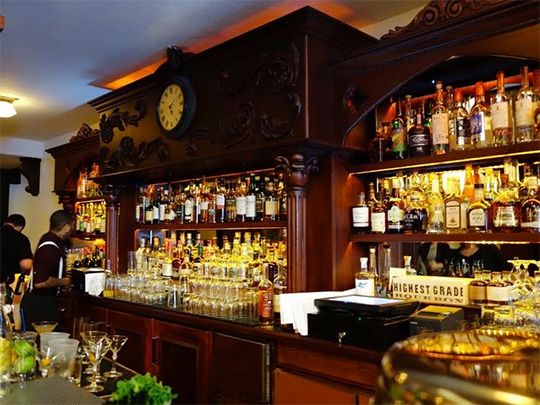
Photo by Brenda Ton | Check Out Her Review, Too!
The Madison – Tupper and Reed (Berkeley, CA)
Tupper and Reed is a new entry into Northern California’s growing cocktail scene, but don’t think that makes them inexperienced. The bar was founded by the team from Bourbon and Branch, a speakeasy joint in San Francisco with a reputation for quality drinks and a wide selection of whiskies. I’ve been to Bourbon and Branch, and I’ll tell you what – if Tupper and Reed’s on the same level, then I can’t wait to get out there!
I spoke with Sevan Araneda, Tupper and Reed’s general manager, and he provided me with a drink recipe that contains perhaps the most unique base liquor of anything I’ve covered for primer. Reed & Lacey’s “California Gold” lies, by their own description, somewhere halfway between a bourbon and a rum. It uses corn, barley, and molasses in its mash, and the result is a whiskey-like spirit with a whole lot of butterscotch, vanilla, caramel, and other rum-like notes.
At Tupper and Reed, they combine this base with a bitter Torino-style Italian vermouth, a splash of espresso liqueur, and a generous dose of cinnamon-heavy old fashioned bitters. The result is an Old Fashioned-like drink with a surprising depth of flavor.
To Make the Drink
- 1.5 oz Reed & Lacey California Gold
- 1 oz. Sweet Vermouth (Cocchi Torino)
- .25 oz. Coffee Liqueur (Borgetti Espresso)
- 3 dashes Aromatic Bitters (Fee Bros. Old Fashion Aromatic)
Combine all ingredients in a pint glass over ice and stir thoroughly. Strain into a chilled rocks glass containing one large ice cube. Garnish with a flamed orange twist.
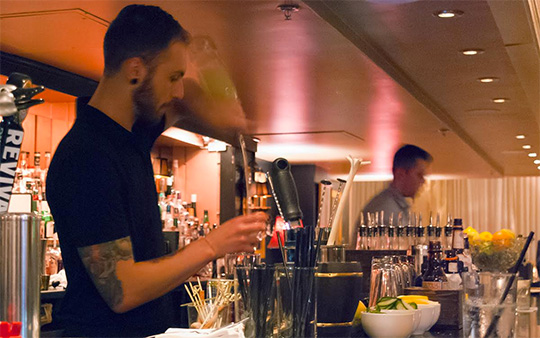
Photo by Christopher Buecheler
Hickory Cherry Old Fashioned – The Dorrance (Providence, RI)
The Dorrance is local to me, and I make a point of visiting frequently in order to check out their often-changing cocktail menu. Make no mistake, just because it’s in a small city doesn’t mean it’s not a quality cocktail establishment; the bartenders there are knowledgeable, professional, and creative, and they come up with some beautiful drinks.
On a recent evening, my wife and I visited with Bartender Greg Mayer to talk about The Dorrance’s upcoming cocktail menu and the making of his smoked cherry syrup. He starts with fresh cherries, and smokes them over hickory chips for two 30-minute stints before soaking them in sugar-water. The result is a thick syrup that’s powerfully sweet, with a ton of hickory smoke on the nose that’s followed up by a smooth cherry flavor. We all agreed that in addition to its use in delicious cocktails—he also whipped up an excellent whiskey sour using the syrup—it’d be a hell of a glaze for grilled pork chops.
The Hickory Cherry Old Fashioned itself is a combo effort, using Greg’s syrup but worked on by multiple bartenders. He credits Bar Manager Vito Lance with finalizing the recipe. It’s the only drink in this series that uses unaged, or “white,” whiskey, specifically the entry from Bully Boy distillery up in Boston. I tried some of the liquor neat, and found it to be quite good – not nearly as corn-forward as many other white whiskeys I’ve tried. Tasty as it was, however, it’s a lot better when combined with the cherry syrup and bitters!
To Make the Drink
- 2 oz. White Whiskey (Bully Boy)
- .25 oz. Hickory Cherry Syrup
- Dash Aromatic Bitters (The Bitter Truth Jerry Thomas’s)
Combine all ingredients in a pint glass over ice and stir thoroughly. Strain into a chilled rocks glass containing a single ice cube. Garnish with an orange twist and a brandied cherry.
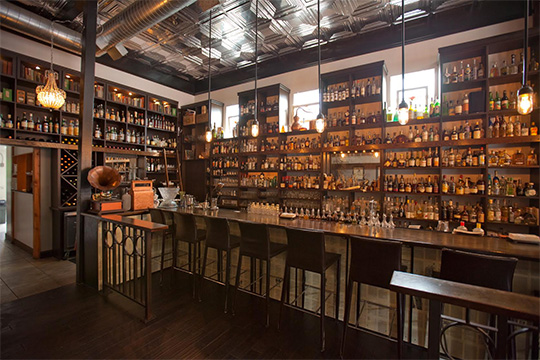
Photo courtesy of canon’s Flickr Page
Truffle Old Fashioned – canon (Seattle, WA)
If that picture doesn’t make you want to visit canon, then, well, there might be something wrong with you, but perhaps their insane liquor list will do the job (to really get an idea of how obscure they can get, pay particular attention to the “Hardcore Porn” section starting on page 142). Founded by famed bartender Jamie Boudreau, canon has shown up on numerous “best bar” lists, and with good reason: their devotion to both innovation and the classics is notable even among other top cocktail destinations.
Jamie’s given us his recipe for the Truffle Old Fashioned, and I’ll let him describe it here in his own words:
The idea for this started around 2003, when the restaurant I was managing at the time used to save the nibs of truffles that were always being grated on dishes. When we were running out of uses for them, we came up with the idea of shoving them into a bottle of Armagnac, so they wouldn’t go bad. Let’s just say that was one of the smartest things man-kind has ever done, as it was from this simple idea that the Truffle Old-Fashioned was born. At canon we use a mix of black Oregon and Burgundian truffles in our infusion.
The Truffle Old Fashioned is not going to be an easy drink to make at home, but it may be worth it. Jamie’s recipe is built to fashion bar-level quantities of the ingredients, and I’ve included it here for authenticity, but if you’re going to dare this one at home, I suggest cutting both recipes down to manageable sizes. For example, for a single 750 ml bottle of cognac, you only need about a quarter of an ounce of black truffle.
To Make the Drink
- 2 oz. Black Truffle-Infused Cognac
- .25 oz. Tonka Bean Syrup
- 4 Dashes canon Boker’s bitters (or Angostura)
Combine all ingredients in a pint glass over ice and stir thoroughly. Strain into a chilled cocktail glass (this is atypical of Old Fashioned-style drinks … but it’s what Boudreau instructed). Garnish with an orange twist and a Griottine cherry.
To Make the Black Truffle-Infused Cognac
- 20 Liters Cognac (Brand unspecified. I like Camus VSOP)
- 6 oz. Black Truffle (cleaned and diced)
Place all ingredients into a bucket and leave for a minimum of one week, stirring and tasting daily (until the black truffel flavor suits your tastes). Filter and bottle until needed.
To Make the Tonka Bean Syrup
- 1 oz. Tonka Beans
- 6 Vanilla Pods
- 4 Cups Muscovado Sugar
- 8 Cups White Sugar
- 6 cups water
Peel the tonka beans, roughly chop them, and place them into a large pot. Gut the vanilla pods and throw everything into the pot. Place the remaining ingredients in the pot and heat on medium until all of the sugar has dissolved. Turn down to a simmer and let sit for 30 minutes, stirring occasionally. Turn off heat and allow to sit until cool. Strain off solids. Add a four ounces of Everclear (high-proof grain alcohol) and refrigerate.
Items in parentheses are recommended by the bartenders who created these drinks.



